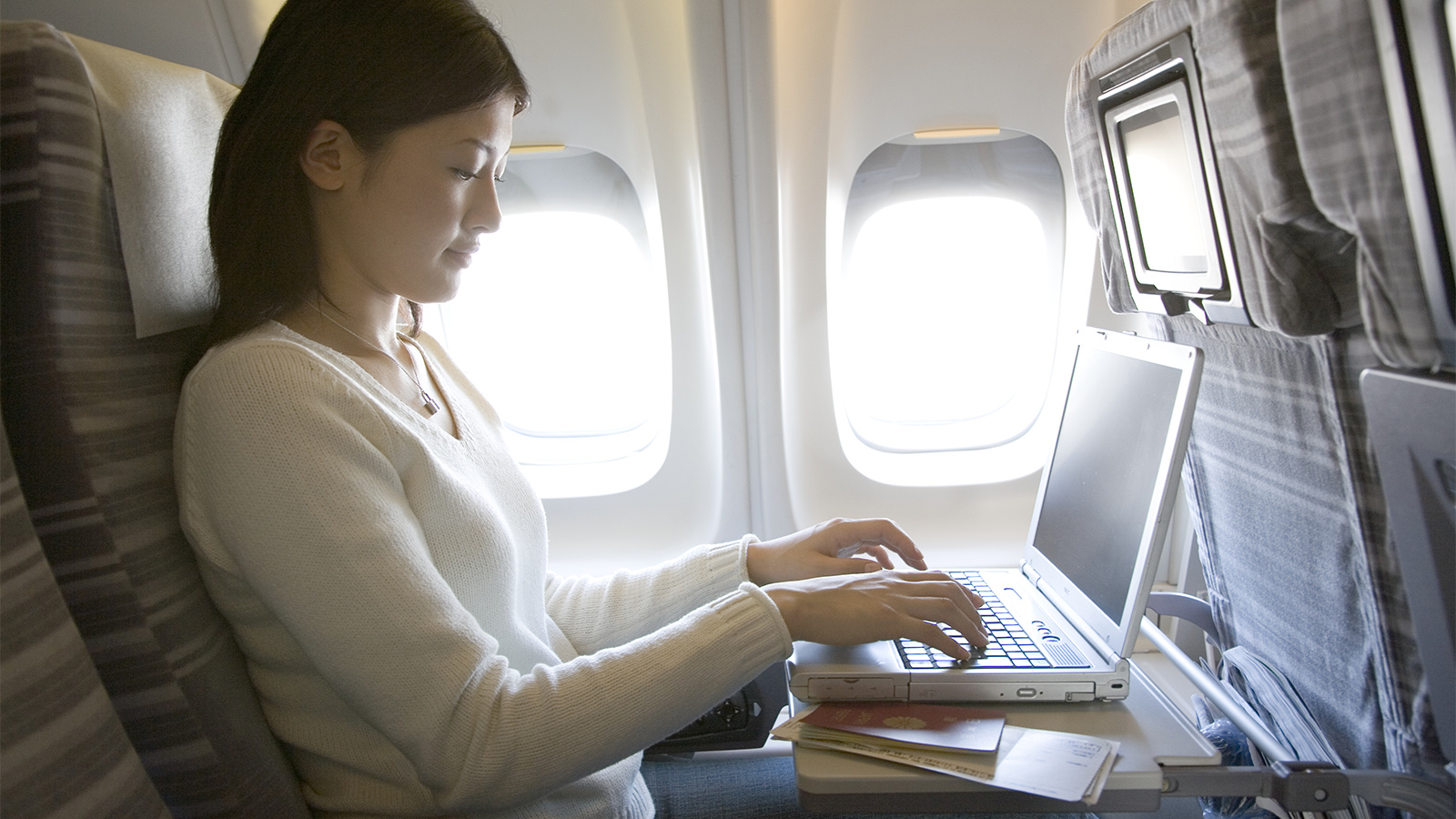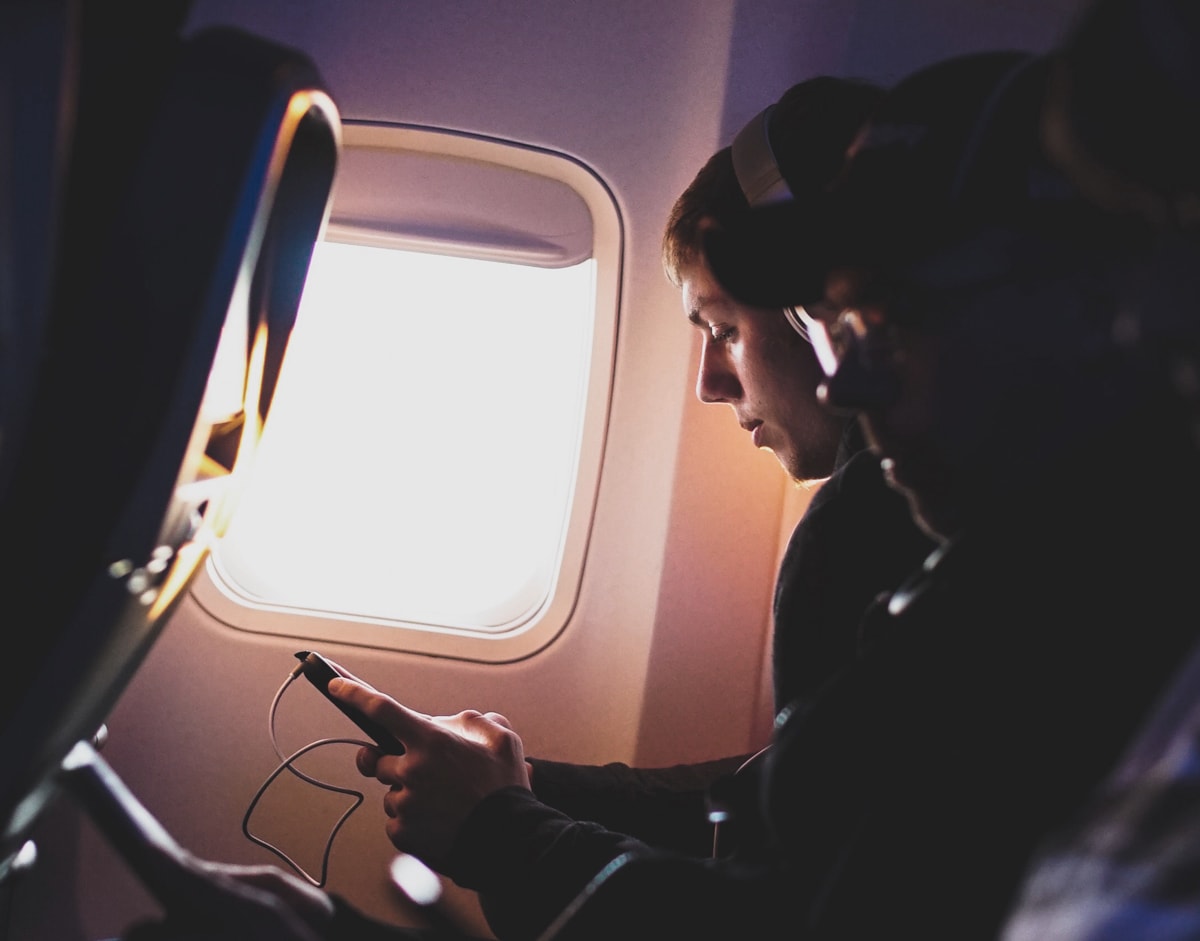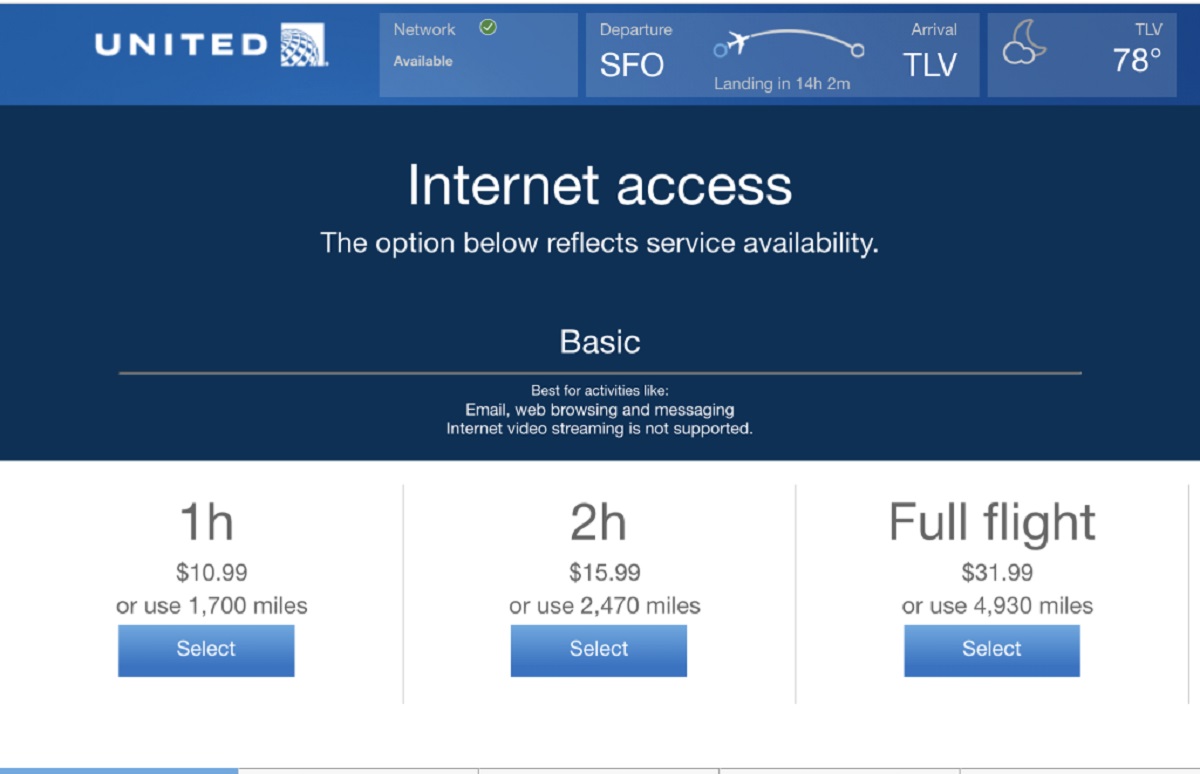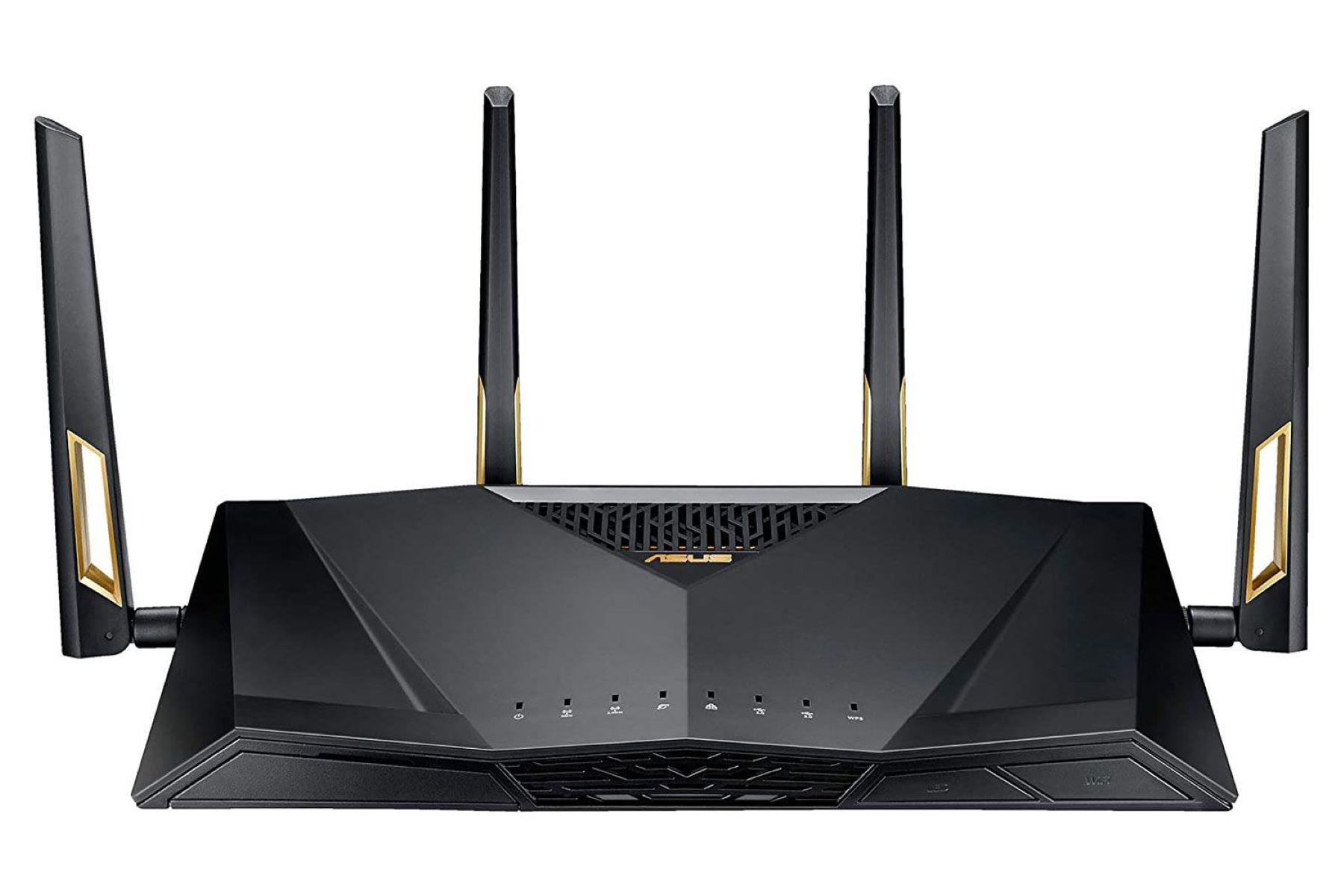Benefits of Having Wifi on a Plane
Having access to wifi while flying has become a game-changer for travelers. In this digital age, staying connected is more important than ever, and having wifi on a plane offers numerous benefits. Let’s explore some of the advantages of having wifi while you’re up in the air.
1. Productivity: With in-flight wifi, you can transform your travel time into valuable work time. Whether you need to catch up on emails, submit an important report, or collaborate with colleagues, having wifi on a plane allows you to stay productive and get work done, even at 30,000 feet in the air.
2. Entertainment: Long flights can often be monotonous, but with wifi on board, you have a world of entertainment at your fingertips. You can stream your favorite movies and TV shows, listen to music, play online games, or catch up on the latest news and trends. Wifi on a plane keeps you entertained throughout your journey.
3. Stay Connected: Wifi on a plane enables you to stay connected with your loved ones, no matter where you are. You can check in with your family and friends, share updates on social media, or video call someone using messaging apps. Having wifi on a plane ensures that you never feel disconnected from the world.
4. Stay Informed: While flying, staying informed about the latest news and developments is essential. With in-flight wifi, you can browse news websites, read articles, and stay updated on current events. You won’t miss out on any important information during your flight.
5. Plan Ahead: Having wifi on a plane allows you to plan your upcoming activities and make necessary reservations. You can research your destination, book accommodations, make restaurant reservations, or organize your itinerary. Wifi on a plane gives you the freedom to plan ahead and ensure a smooth trip.
Overall, having wifi on a plane enhances your travel experience by providing productivity, entertainment, connectivity, and the ability to stay informed and plan ahead. It allows you to make the most of your flight time and turn it into a valuable and enjoyable part of your journey.
Finding Airlines with In-Flight Wifi
When it comes to finding airlines that offer in-flight wifi, it’s essential to do your research before booking your ticket. Not all airlines provide this service, and it can vary depending on the type of aircraft and the route you’re flying. Here are some tips to help you find airlines that offer in-flight wifi:
1. Check the airline’s website: The first step is to visit the airline’s official website and look for information about their in-flight amenities. Most airlines have a dedicated section or page where they highlight the availability of wifi on their flights. They may also provide details about the duration and pricing of the wifi service.
2. Use flight search engines: Online flight search engines or travel websites often have filters that allow you to refine your search based on specific amenities, such as in-flight wifi. By selecting the option for “wifi-enabled flights,” you can narrow down your options and find airlines that offer wifi.
3. Read reviews and forums: Reading reviews and forums can provide valuable insights from other travelers who have recently flown with a specific airline. Look for reviews that specifically mention the availability and quality of in-flight wifi. This will give you a better idea of which airlines prioritize providing this service.
4. Check with frequent flyer programs: If you’re a member of an airline’s frequent flyer program, you can take advantage of the perks offered by the program, including discounted or complimentary in-flight wifi. Check the program’s benefits or reach out to the airline’s customer service to inquire about any wifi-related privileges.
5. Stay updated with technology trends: As technology continues to advance, more airlines are investing in in-flight wifi to meet the demands of passengers. Keep an eye on industry news and updates about airlines adopting or expanding their wifi services. Newer aircraft models are more likely to be equipped with wifi capabilities.
Remember that availability and pricing of in-flight wifi may vary depending on the airline and specific flight. It’s also worth noting that some airlines offer different wifi packages with varying speeds and data limits, so be sure to check the details before your flight.
By taking these steps and doing your research, you can find airlines that offer in-flight wifi, ensuring you stay connected and enjoy a more convenient and enjoyable travel experience.
Understanding the Different Types of In-Flight Wifi
Not all in-flight wifi services are created equal. There are different types of wifi systems used by airlines, each with its own capabilities and limitations. Understanding these types will help you manage your expectations and choose the right wifi service for your needs. Let’s explore the different types of in-flight wifi:
1. Satellite-based wifi: This type of in-flight wifi relies on satellite connectivity to provide internet access to passengers. It offers coverage even on long-haul flights that traverse over large bodies of water and remote areas. Satellite-based wifi generally provides reliable and high-speed internet, allowing you to stream videos, browse the web, and stay connected with ease. However, it may come with additional costs and may not be available on every flight or airline.
2. Ground-based wifi: Unlike satellite-based wifi, ground-based wifi utilizes ground-based cellular networks or air-to-ground technologies to provide internet connectivity on the plane. This type of wifi is typically faster and more reliable when flying over land. However, it may have limitations in terms of coverage, especially during flights over remote or oceanic areas.
3. Hybrid wifi: Some airlines combine both satellite-based and ground-based technologies to offer hybrid wifi systems. This allows for uninterrupted connectivity, ensuring that passengers have internet access irrespective of their location. Hybrid systems provide a good balance between coverage and speed, offering a reliable wifi experience throughout the flight.
4. Limited connectivity: It’s important to note that even with in-flight wifi, the level of connectivity may vary. Due to factors like network congestion, technical issues, or restrictions imposed by certain countries, your internet speed and access to certain websites or applications may be limited. Some airlines may also impose data caps or charge additional fees for higher-speed access.
5. In-flight entertainment systems: In addition to wifi, many airlines offer in-flight entertainment systems that provide a range of movies, TV shows, games, and music directly to your personal device. These entertainment systems often work independently of wifi and are accessible through the airline’s app or via onboard screens. While it may not offer internet browsing or connectivity, it provides a variety of entertainment options to keep you engaged during your flight.
Understanding the different types of in-flight wifi will help you set realistic expectations for your internet connection while flying. Keep in mind that availability and quality of wifi may vary among airlines and flights. Before your trip, check with the airline about the type of wifi service they offer and any associated costs, so you can plan accordingly and make the most of your in-flight internet experience.
How to Connect to Wifi on a Plane
Connecting to wifi on a plane can vary slightly depending on the airline and the type of wifi system they have in place. However, the following general steps will guide you through the process of connecting to wifi during your flight:
1. Enable wifi: Once you’re onboard the plane and the cabin crew announces that wifi is available, ensure that the wifi feature on your device is turned on. This can usually be done through the settings menu on your smartphone, tablet, or laptop.
2. Select the network: After enabling wifi, you’ll see a list of available networks. Look for the network name (SSID) provided by the airline. The network name may be displayed on the seatback screens, in the airline’s magazine, or announced by the crew.
3. Connect to the network: Select the airline’s wifi network from the list and click on the “Connect” or “Join” button. Your device will attempt to establish a connection to the network. This may take a few moments.
4. Open the login page: Once connected, open your web browser. You may be redirected automatically to the airline’s portal or login page. If not, manually type in a common website address like “www.google.com” and you should be redirected to the login page.
5. Log in or sign up: On the airline’s login page, you’ll usually be prompted to enter your credentials, such as your name, booking reference, or frequent flyer number. Some airlines may require you to create an account or purchase a wifi plan, while others may offer complimentary wifi to their passengers.
6. Accept terms and conditions: After providing the necessary details, you may be required to accept the terms and conditions of using the in-flight wifi service. Make sure to read and understand the terms before proceeding.
7. Enjoy the wifi: Once you’ve successfully logged in and accepted the terms, you should now have access to the in-flight wifi. Feel free to use your device to browse the web, check emails, or enjoy entertainment options available through the airline’s wifi portal.
It’s important to note that some airlines may have different procedures or variations in connecting to their wifi network. If you encounter any difficulties during the connection process, the cabin crew will be there to assist you. They can provide instructions or troubleshoot any issues you may encounter.
Remember to stay respectful of other passengers and refrain from streaming large files or engaging in activities that may slow down the wifi for everyone else. Enjoy your internet access responsibly and make the most of your connected experience while flying.
Tips for a Smooth Wifi Connection on a Plane
Ensuring a smooth wifi connection on a plane can greatly enhance your in-flight experience. To optimize your internet access and avoid potential connectivity issues, consider the following tips:
1. Prepare your device: Update your device’s operating system and apps before your flight. This ensures that you have the latest software and firmware, which can improve wifi compatibility and performance.
2. Disable unused apps and cloud services: Close any unnecessary apps and disable cloud services that may consume bandwidth in the background. This can help free up resources and enhance your overall wifi experience.
3. Position your device properly: Depending on the location of the wifi antenna on the aircraft, positioning your device near the seatback pocket or overhead bin may provide a stronger signal. Experiment with different positions to find the best reception.
4. Bring your own headphones: Using your own headphones with a wired connection can reduce any potential interference with the wifi signal. Wireless headphones or speakers may interfere with the wifi signal and cause a drop in connectivity.
5. Limit bandwidth-heavy activities: To prevent overloading the wifi network and ensure a smooth connection for everyone, avoid bandwidth-intensive activities like streaming 4K videos, downloading large files, or video conferencing. Stick to more lightweight browsing, email, and messaging.
6. Clear your cache and cookies: Clearing your browser’s cache and cookies before connecting to in-flight wifi can help eliminate any conflicting settings and improve your connection speed.
7. Avoid peak usage times: In-flight wifi performance may vary during peak usage times, such as meal services or when most passengers are connected. Consider connecting during quieter periods to maximize your internet speed.
8. Keep your device charged: It’s a good idea to have your device fully charged or bring a portable charger. Streaming and intensive wifi usage may drain your device’s battery faster than normal.
9. Be patient with speed fluctuations: Wifi signal strength can fluctuate due to factors like air turbulence or changes in the plane’s position. If you experience occasional slowdowns, be patient and wait for the signal to stabilize.
10. Follow airline guidelines: Some airlines may have specific guidelines regarding the use of in-flight wifi, such as restrictions on accessing certain websites or using voice-over-internet-protocol (VoIP) services. Make sure to familiarize yourself with the airline’s policies and abide by their rules.
By following these tips, you can optimize your in-flight wifi experience and ensure a smooth and enjoyable connection throughout your journey. Stay connected, be mindful of others, and make the most of your time in the air.
Alternatives to Wifi on a Plane
While wifi on a plane is convenient for staying connected and entertained during your flight, there may be instances where wifi is not available or the connection is unreliable. In such cases, here are some alternative options to consider:
1. Offline entertainment: Instead of relying on a wifi connection, prepare offline entertainment options before your flight. Download your favorite movies, TV shows, podcasts, music, or e-books onto your device. This way, you can enjoy your preferred content without needing an internet connection.
2. Bring a good book: A book can be a great way to pass the time during a flight. Whether it’s a physical book or an e-book, diving into a captivating story can transport you to a different world and make the flight more enjoyable.
3. Play offline games: Similar to offline entertainment, consider downloading offline games onto your device. There are many mobile games available that can be enjoyed without an internet connection, whether it’s a puzzle game, word game, or adventure game.
4. Listen to offline music or podcasts: Create a playlist of your favorite songs or download podcasts that interest you. This way, you can listen to music or gain knowledge and entertainment through podcasts without relying on wifi.
5. Catch up on work: If you have work-related tasks or projects that don’t require internet access, take advantage of the distraction-free environment during your flight to tackle those tasks. Use offline applications or work on documents stored locally on your device.
6. Watch in-flight entertainment: Many airlines provide in-flight entertainment systems with a wide selection of movies, TV shows, and music accessible through the seatback screens. Take advantage of this offering to enjoy a variety of entertainment options without needing wifi.
7. Engage in conversation or relaxation: Use the opportunity to disconnect from the digital world and engage in conversation with your travel companion or simply relax. Strike up a conversation with your neighbor, or take the time to meditate, practice mindfulness, or enjoy the view from your window.
8. Plan and organize: Use the flight time as an opportunity to plan and organize your travel itinerary. Review your reservations, research your destination, create a list of places to visit, or plan the activities you’d like to engage in during your trip.
Remember that these alternatives may not replace the full internet connectivity experience, but they can offer enjoyable and productive ways to pass the time while flying without relying on wifi. Embrace the opportunity to disconnect and explore different forms of entertainment and productivity during your flight.
Conclusion
Having wifi on a plane has revolutionized the way we travel, offering numerous benefits such as increased productivity, entertainment options, and staying connected with loved ones. With the availability of in-flight wifi, passengers can make the most of their flight time and turn it into a valuable and enjoyable part of their journey.
When looking for airlines with in-flight wifi, it is essential to do thorough research and check the specific amenities offered by each airline. Utilizing the airline’s website, flight search engines, and reading reviews can provide valuable insights into the availability and quality of in-flight wifi services.
Understanding the different types of in-flight wifi systems, including satellite-based, ground-based, and hybrid, can help manage expectations and choose the right wifi service for your needs. Additionally, being aware of limitations and restrictions, such as limited connectivity or caps on data usage, can ensure a smoother wifi experience during your flight.
When connecting to wifi on a plane, it’s important to follow the necessary steps, including enabling wifi on your device, selecting the correct network, logging in or signing up, and accepting the terms and conditions. By following these steps and being patient with potential speed fluctuations, you can successfully connect to in-flight wifi.
To ensure a smooth wifi connection on a plane, it is advised to prepare your device, disable unused apps, position your device correctly, limit bandwidth-heavy activities, clear cache and cookies, and connect during quieter periods. Following these tips can help optimize your internet access and improve your overall in-flight wifi experience.
If wifi is not available or you encounter connectivity issues, there are alternative options to consider, such as offline entertainment, books, offline games, offline music or podcasts, in-flight entertainment systems, engaging in conversation, or working on tasks that don’t require internet access.
Ultimately, whether you choose to use wifi on a plane or explore alternative entertainment options, the goal is to make your flight experience enjoyable, productive, and connected. Embrace the opportunities that in-flight wifi or other forms of entertainment provide, and make the most of your time in the air.

























